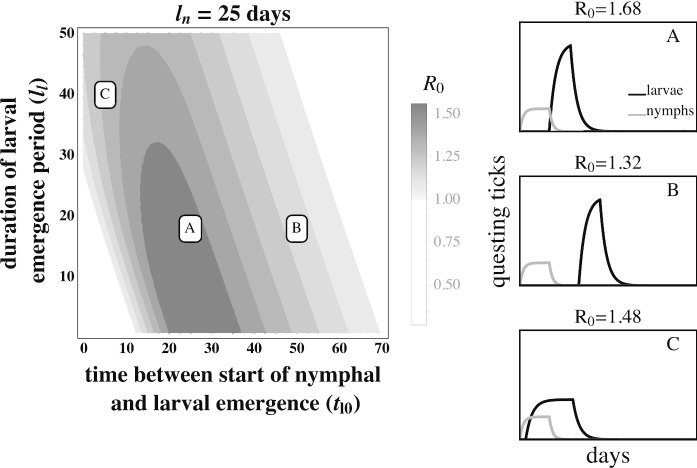Fig. 3.
The basic reproductive number, , of B. burgdorferi is greatest when larval activity is concentrated around peak mouse infection prevalence. The left panel depicts as a function of the duration of larval emergence () and time between nymphal and larval emergence (). Panels on the right depict within-season dynamics for representative timing parameter values indicated by their respective letters on the left panel. (A) Concentrated larval emergence (small ) that begins slightly after nymphal emergence () increases the probability that questing larvae feed on mice recently infected by nymphs (). (B) Transmission decreases as larvae emerge later () because the larval cohort feeds after peak mouse infection prevalence (). (C) When larval and nymphal emergence is more synchronous (small ), transmission to larvae increases as larval emergence duration increases (large ) because more larvae feed after infectious nymphs (). B. burgdorferi is not maintained in systems where . is calculated assuming tick emergence is uniformly distributed ( where is the larval emergence duration, see Appendix C). (see Appendix A.) days; all other parameter values are shown in Table 1

